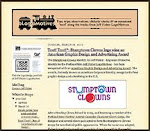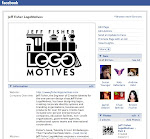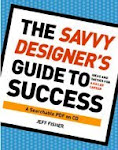by Julia PtasznikNote: This article was written for and originally published in the Fall 2000 edition of Exchange, the semi-annual journal of the Toronto, Canada-based Design Exchange.
Something magical happens when a designer and client begin to work together. It’s like the bond that develops between director and actor, composer and lyricist or psychoanalyst and patient. In the design business, this creative chemistry should lead to breakthrough thinking around the design opportunity and ultimately to the design solution. But this relationship cannot begin to gel until there is commitment on both sides. It certainly cannot take hold in the speculative pitch situation in which the designer feels insecure and on show. And yet, in Canada and other countries, both public and private sector organizations persist in asking designers to develop creative concepts in competition with their peers for a set fee or on spec. What’s more, they often impose a totally unrealistic timeframe for spec work, and the set fee, if offered, bears no relation to the work involved because at this stage client and designer have not agreed on a scope of work for the project. …This article discusses the issue in the context of international practice.
Test-driving potential suppliers:
If you are a design professional, you are probably intimately familiar with requests for proposals (RFPs) which require not only schedule and financial estimates, but often full-blown creative presentations as part of a pitch for the job. If you are on the client side, you have probably heard of test-driving potential suppliers, or may even have done so yourself. This article should help both sides, as it provides a global perspective on the issue and suggests how to negotiate a mutually-beneficial working arrangement.
First, let’s briefly outline the main problems involved.
Spec work is a problem because:
1. It’s exploitative. It requires the designer to perform services free of charge, without any guarantee of compensation. Further, it is inappropriate for small-scale design projects, because the work performed often constitutes the entire project.
2. It’s unethical. It essentially amounts to buying new business and doesn’t fall far from bribery. It also fosters an unhealthy competition environment among designers and firms bidding on the same project.
3. It offers no future potential. Many designers hope this is going to lead to future ongoing business, whereas the reality is that clients who adopt this vendor selection method tend to apply it to every project.
4. It can lead to copyright infringement. There are numerous cases where a design house, initially told that they have not been awarded the project, has found its work used either in its entirety, or as the basis for creating the actual project, without the original designer’s knowledge, consent, and without appropriate compensation.
5. It negatively impacts the entire design industry. As long as there are designers providing services free of charge, the practice is going to continue to flourish and to erode the professional status of designers in all disciplines.
Speculating on design futures:
The increased demand for design services in the last decade of the 20th Century has brought about an increase in legal and ethical disputes. Apart from the issues of rights, liabilities, and ownership (which Eric Swetsky discusses in this issue [of Exchange]), the good old test drive, or speculative creative pitch, is making a comeback.
The practice of clients requesting creative work to be done before the project is awarded has its origins in advertising, where speculative creative, commonly referred to as a "pitch," is the mode in which agencies compete for multimillion dollar accounts. In these cases, the practice is considered appropriate, as the winning agency stands to earn millions of dollars, making the initial investment of time and effort well worth it.
However, when the project is a one-time, smaller scale, graphic design assignment, a free pitch essentially amounts to performing the majority of the required work up-front, without any guarantee of compensation. Consider the design of a logo. In addition to scheduling and budgeting the job, designers submitting comps for consideration have to go through the entire research process, evaluating the company and its competition, and determining and executing several appropriate solutions — which amounts to 90, if not 100, percent of the assignment. This type of arrangement, while extraordinarily unfair to the designer, is on the rise.
Global perspective:
In the United States, the practice has almost become the norm, especially for large conglomerates and governmental organizations. Just within the past six months, my own marketing communications consultancy has received three speculative creative requests. The most interesting example is that of a prominent international children’s advocacy fund. Here is an excerpt from the first two paragraphs of its RFP: "Bids are invited for the design, layout, typesetting, and print production of the [organization’s] 2000 Annual Report ... The designer [is] expected to present a design concept for the publication, showing the overall design and the treatment for each of the elements; when awarding the contract, both the concept and the price [are going to] be taken into consideration."
This amounts to at least 60 hours of work, above and beyond preparing the actual proposal and estimating the costs of the project. It is interesting that of all types of organizations, an advocacy group would make such a request.
USA-based design firms are not alone. According to Jack Yan, one of the most prominent contemporary type designers, founder of Australia’s leading type house, JY&A Fonts, and publisher of several magazines: "A lot of this ‘pitching’ happens [in Australia and New Zealand] as well. We frequently are involved in free pitches. I consider them a necessary evil to doing business and cannot see alternatives, given that our client market likes to play things that way."
Keith Williams of the UK-based design consultancy sprout.uk.com suggests that the local situation also mirrors that of the United States: "In the late 80s and early 90s, this was just the way it worked. You did the unpaid pitch, or the work never seemed to come your way." Today, government departments still entertain this practice, simply because they have the muscle to do so. Overall, he suggests that although the practice of UK companies requesting speculative creative has eased a little with smaller and medium-sized firms, some of the larger clients still encourage or even expect it. The irony, of course, is that the larger companies are the ones who can afford to pay.
While the practice is on the rise among the design profession, the advertising industries in some countries are beginning to recognize just how exploitative free pitches are. According to Ranajit Tendolkar, a veteran of the Indian ad industry and currently one of the principals of the Bombay-based Web design shop Pigtail Pundits, the free pitch practice is dying out: "These days, when asked to make a speculative presentation, many [local] agencies tell the prospective client that the presentation is not going to be free, and many clients accept that. These clients are professional enough to realize that the agency is spending valuable time, money, and effort, so they [agree] to pay a ‘rejection fee’—an amount mutually agreed-upon beforehand."
Designers’ position:
American advocacy groups have made their position on this issue clear long ago. For instance, the Graphic Artists Guild has a chapter devoted to speculative creative in its Handbook: Pricing and Ethical Guidelines. The beginning of this chapter reads: "The Graphic Artists Guild is unalterably opposed to any artist being asked to work on speculation because of the inherent risks to the artist in such circumstances. Art buyers should not ask artists to work on a project unless a fee has been agreed upon in advance. Artists must be adequately compensated at any time they are requested to create artwork. Working on speculation places all the risks on the artist without a commitment on the buyer's part."
This position is in line with the Model Code of Professional Conduct created jointly by the International Council of Graphic Design Associations (ICOGRADA), International Council of Societies of Industrial Design (ICSID), and International Federation of Interior Architects/Designers (IFI), headquartered in Belgium, Finland, and South Africa, respectively. The Code’s objective is to state the principles for an international basis of ethical standards related to the practice of design, be it graphic/visual communications, product and capital goods design, or interior design and architecture.
The remuneration close of The Code states: "A designer shall not undertake any work at the invitation of a client without payment of an appropriate fee."
Asking designers to submit creative before the project is awarded is just like asking a construction company to build a house before one decides to actually buy it.
The client perspective:
Perhaps Claire Burke, vice president of the New York, USA-based public relations firm Hunter & Associates, puts it best when she says that asking designers to submit creative before the project is awarded is "just like asking a construction company to build a house before [one decides] to actually buy it." According to Burke, free pitches may have their place in the advertising and public relations industries, but the practice is really not relevant to the design field. She points out: "There are other, more appropriate methods of selecting a designer."
Another interesting point of view is offered by Meagan Crosby Hayes, director of marketing communications of one of the States’ leading mergers and acquisitions firms, The Geneva Companies, headquartered in Irvine, California. Hayes notes that: "The process [of selecting a designer] is largely trial-and-error, and there are those who try to avoid the possibility of error by employing competition-like methods of designer selection. It is not something I do. Leaving the obvious ethical argument alone, it just doesn’t make sense from a business perspective. Having three different people or firms work on the same project at the same time is taxing on our own internal resources. First, we’d have to educate them as to the nature of the business. Second, we’d have to give direction on the project itself and monitor its progress. I’d much rather interview people, see their work, and make an educated guess as to who is better suited to a particular project. While I may ask them to pitch a concept, I wouldn’t expect them to execute it prior to formally engaging their services."
A disturbing case:
It seems that there isn’t a global consensus on the issue of spec work, among industry organizations or creative professionals. For example, Jeff Fisher of the Portland (Oregon), USA-based Jeff Fisher LogoMotives, an accomplished identity designer who has won over 130 industry awards since 1995, unequivocally states: "I do not do work on a speculative basis. If someone wants to ‘test drive’ me as a designer for future projects, they pay for my time at my usual rates."
What led to this non-negotiable position was a disturbing case of blatant theft — or copyright infringement — on behalf of one of Fisher’s clients. After the client commissioned and paid Fisher for a logo design, he requested that a few layouts of stationery be prepared on speculation, as he wasn’t sure he was going to produce them immediately. After submitting the work, Fisher was told that the client would contact him once he was ready to proceed. A month later, Fisher received a letter from the client company’s accounting department, written on stationery and accompanied by a business card Fisher had designed. The bookkeeper, having no idea the client had effectively stolen the work, was asking for some tax information. Fisher immediately took legal action, and was compensated for the work via an out-of-court settlement.
Fear of the unknown
Clients who understand what is involved in coming up with an effective design solution tend to operate along the same lines as Burke and Hayes. However, there are many clients who lack awareness of the design process. Some believe that new technology has made the process of developing creative concepts both faster and easier, whereas in reality it is only the tools that have changed.
It is also easy to see how clients could be uncomfortable awarding a project to a firm with whom they have not had previous experience, and how requesting a free pitch may seem like the easy way out. But consider this: Could you ask an accountant to do your taxes under the assumption that you will only pay for this service if you like the amount of money you get to keep as a result?
Selection criteria
There are other effective ways for a client to ensure that the selected designer is the best person for the job. If you are in the market for design, the best place to start is referrals from colleagues. If that is not an option, national or local industry organizations, such as the Design Exchange in Canada, can put you in touch with designers who specialize in the type of service you seek. In an ideal world, a portfolio review, client reference checks, an acceptable cost estimate, and last but not least, the chemistry generated between client and designer at a face-to-face meeting should be enough to make the choice.
If some clients still feel uneasy, Robbie Vorhaus of New York-based Vorhaus Public Relations, suggests that a paid pitch may be mutually beneficial: "Let’s say, for the sake of argument, that we have a budget of $100,000. We may take $5,000 and divide it between three people or firms, thereby covering their initial expenses. The firm that does the best work wins the project."
If a client company has budgetary restrictions, it may choose to run a public competition, although that is another practice that is heavily frowned upon in the design industry. In this case, there are two suggestions to be made. First, it is a good idea to consult the local industry organizations and review their fair practices recommendations with regard to competitions. Second, it is important to make sure that the grand prize is commensurate with the market rate for the project at hand.
Taking action:
If you are a designer presented with an RFP requiring work on speculation, take the time to ask yourself these questions:
1. Am I willing to work for free? (Of course, there may be exceptions to the rule, such as bidding on projects that are enormous in scope or involve potential retainer-based arrangements.)
2. Do I want to secure new business by buying it, or on the merits of previous experience and accomplishments?
3. Do I empathize with designers who participate in speculative creative presentations, and do I care about how my participation in such schemes affects my colleagues?
4. Am I comfortable with the fact that doing a speculative presentation does not guarantee any future relationship with a client?
5. Am I vulnerable to the possibility of someone taking my work and using it without my knowledge, consent, or payment?
And here is one final suggestion. Most designers faced with a request for spec work think that they only have two choices — to do the requested work or to gracefully bow out. But, even if you are not willing to work for free, you should still submit a proposal and cost estimate, accompanied by a letter explaining your position on free pitches. Once alerted to how unethical this practice is, the client company may change its position. My firm consistently takes this route, most recently in response to the aforementioned RFP from the children’s advocacy fund. We have been awarded that job, despite the fact that other firms competing for it had chosen to submit the requested speculative creative.
In conclusion, to borrow from a well-known adage:
Designers and clients alike don’t get what they deserve — they get what they negotiate.
©2000 Julia Ptasznik

































